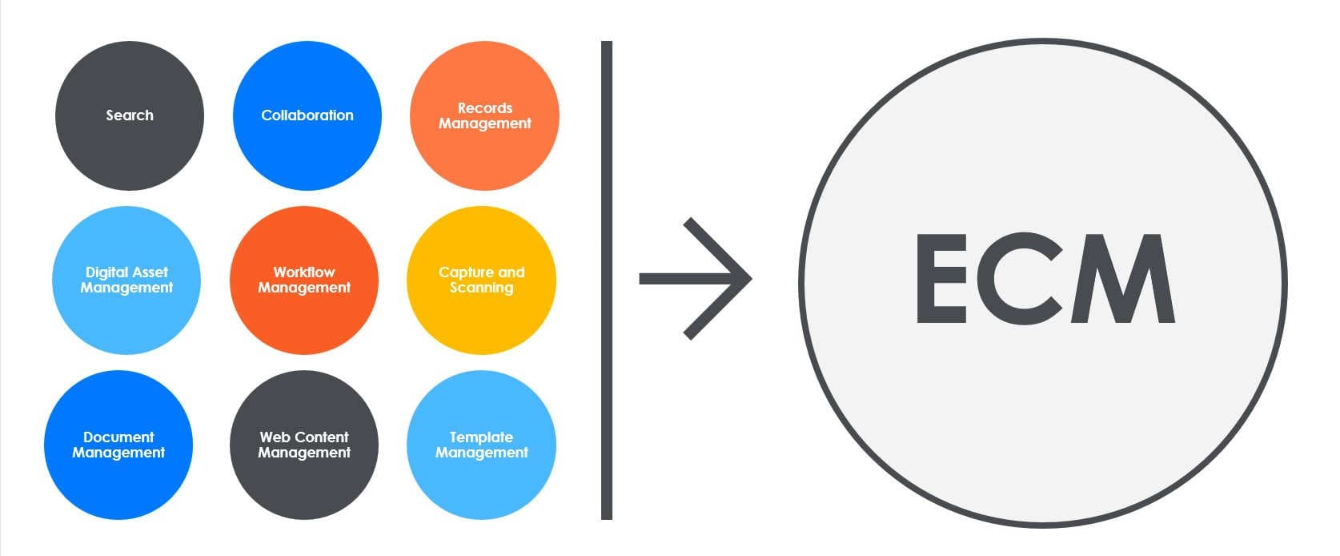Enterprise content management (ECM) strategy

Your company probably already uses a range of ECM tools and techniques, but do you have an optimized Enterprise Content Management (ECM) strategy?
There comes a point when every company develops methods for organically storing and sharing data with employees. Yet, this can become painful as data can double in a matter of months. Are your methods working?
In today’s digital world, quick access to relevant data is a necessity. As a result, the time to implement an efficient and results-oriented ECM strategy is right now.
Read more about Templafy Enterprise Content Management Software
Why You Need an Enterprise Content Management Strategy?
Part of the enterprise content management framework is retention. In terms of governance and regulatory guidelines, certain types of data sets must be retained for specified periods of time. In addition, many companies want to hold useful data on clients such as targeted marketing materials, purchase history, communication records and more.
ECM series article #1: What is Enterprise Content Management?
- Manage Retention
It is important to retain this data in a logical and efficient manner where employees can have access based on version control. With regard to enterprise content management best practices, your strategy should take into account legal, operational, regulatory, historical and fiscal requirements of data. As a result, it should retain content based on those parameters.
- Add Data Integrity
The integrity of the data is also significant, similar to your retention strategy. Employees will need access to customer information to perform their jobs successfully. So, the data must be relevant, accurate and timely.When speaking to a customer, you want up-to-date information about that customer – not data that is several years past its prime. Effective data governance ensures the interpretation of data is consistent. You want everyone to draw the same conclusions from the same document.
- Enable Governance
Employees send out information to customers all the time. The problem is the way it’s sent – there may not be any governance involved in terms of streamlining the look of communications to fit the company profile. Developing an enterprise content management strategy must include a system that incorporates governance over all company marketing materials and communications. Furthermore, automated compliance should be involved, while allowing employees to personalize company templates.
- Improve Security
Of course, your ECM strategy should always restrict access to sensitive, confidential and privileged content. Many times, security breaches occur when employees use their personal devices to access company data – and, hackers can easily break into unsecured devices. To prevent an employee manifested breach, ECM technology have the option to control user access.
- Accessibility
Just as mentioned above, accessibility is important in terms of a need-to-know basis. Customer service reps must have quick access to communication records – and the same is true of marketing. Yet, they don’t need access to sensitive or confidential data. Still, you want an enterprise content management strategy that offers real-time access, from anywhere in the world
The definitive guide to template management
Increase productivity when creating documents
Content Capture and Master Repository
Part of a strategy development process for enterprise content management is to have a content capture process. If you use ECM in the cloud, you won’t have to worry about on-site storage. Furthermore, your content manager should offer the tools needed to capture relevant content – on a timely and consistent basis.
- Create a Managed Repository
A managed repository is the central aspect of an enterprise content management strategy. You want the ability to offer employees a central hub where data can be searched for and retrieved using common and easy-to-remember search terms. When an employee is on the phone with a client, they should not have to fumble through paper records or email trails to search for data the customer needs right now. Instead, a central portal can give them real-time data from anywhere.
- Ensure Accurate Data
Naturally, the data must be accurate. If a customer wants a quote on a multi-tiered project, accurate data on pricing and related projects is essential. Not to mention, you want to have the latest version of all data sets immediately available. There should be no issues with searching for information when required.
- Content Management Best Practices – Documents, Emails and Presentations
Organizations encounter problems when there are multiple storage locations for emails and presentations. You want all your marketing, email and presentation materials to have a standard company template that can be customized per employee. You also want the ability to integrate email platforms with corporate documents.
To illustrate, Templafy offers an enterprise-wide governance solution to maintain compliance and on-brand communications for all your company documents and emails. Templates can be automatically personalized and switch between multiple user profiles.
Moreover, all brand assets such as company colors, logos and fonts are automatically checked for compliance and updated. Plus, with an administration platform, everything can be quickly updated and deployed without needing assistance from the IT department.
Management of Physical, Electronic and Web Content
With the astronomical growth of data, users need a system that facilitates automated content creation and capture.
- Content Creation
Your system should capture all content quickly and store it instantly into a central repository. As a result, the organization can better manage revision and consumption of all data. It is redundant and risky to manage content creation through multiple locations such as emails, network drives and personal cloud storage.
- Template design and Approvals
In terms of customer communications, it is imperative for employees to have a system that automatically updates company-approved templates, fonts and logos for governance, compliance and streamlined outgoing communications.
- Review and Publishing Processes
Naturally, customer-facing employees handle customer inquiries as part of their job description. Make the review process easy with company-approved templates and automatically deployed updates.
Automation
Relying on paper and emails is inefficient and cause delays with turnaround time. Plus, the aspect of audibility and traceability is missing. The goal is to improve quality and reduce user effort.
- Invisible Record keeping
You want an enterprise CMS that can integrate workflows and record keeping in the background without any interruption of daily business processes.
- Lifecycle Management
This is about utilizing an electronic document management system (EDMS) through creation, revision, retention, archiving and purging. In addition, formal approval processes should be integrated to ensure regulatory and fiscal requirements are met.
Ongoing Evaluation
Part of a strategy development process for enterprise content management includes consistent evaluation of all processes involved. You want a clear definition of your desired outcome and a system that can measure whether goals are met.
- Develop Key Performance Indicators
Without key performance indicators, it is difficult to determine whether your ECM strategy is effective. So, measure results against your objectives.
- Involve the Entire Organization
You also want to commit the entire organization to maintaining an optimized ECM system. It is critical to ensure consistent ECM practices. Otherwise, without company-wide commitment, you can experience the risk of litigation and even regulatory noncompliance.
So, get commitment and make sure everyone understands what is at stake. Plus, you want everyone to understand what they have to gain if they commit to an ongoing enterprise content management strategy.
In Conclusion
Don’t worry – adopting an enterprise content management strategy isn’t necessarily about a complete overhaul of your systems. Your company probably already engages in ECM. But as with everything, it’s always worth improving your existing methods to use a more practical, efficient and results-oriented system that ensures both compliance and governance.
We wish you luck with your ECM strategy!
Get in touch with our team and we can discuss how Templafy supports your ECM strategy.


